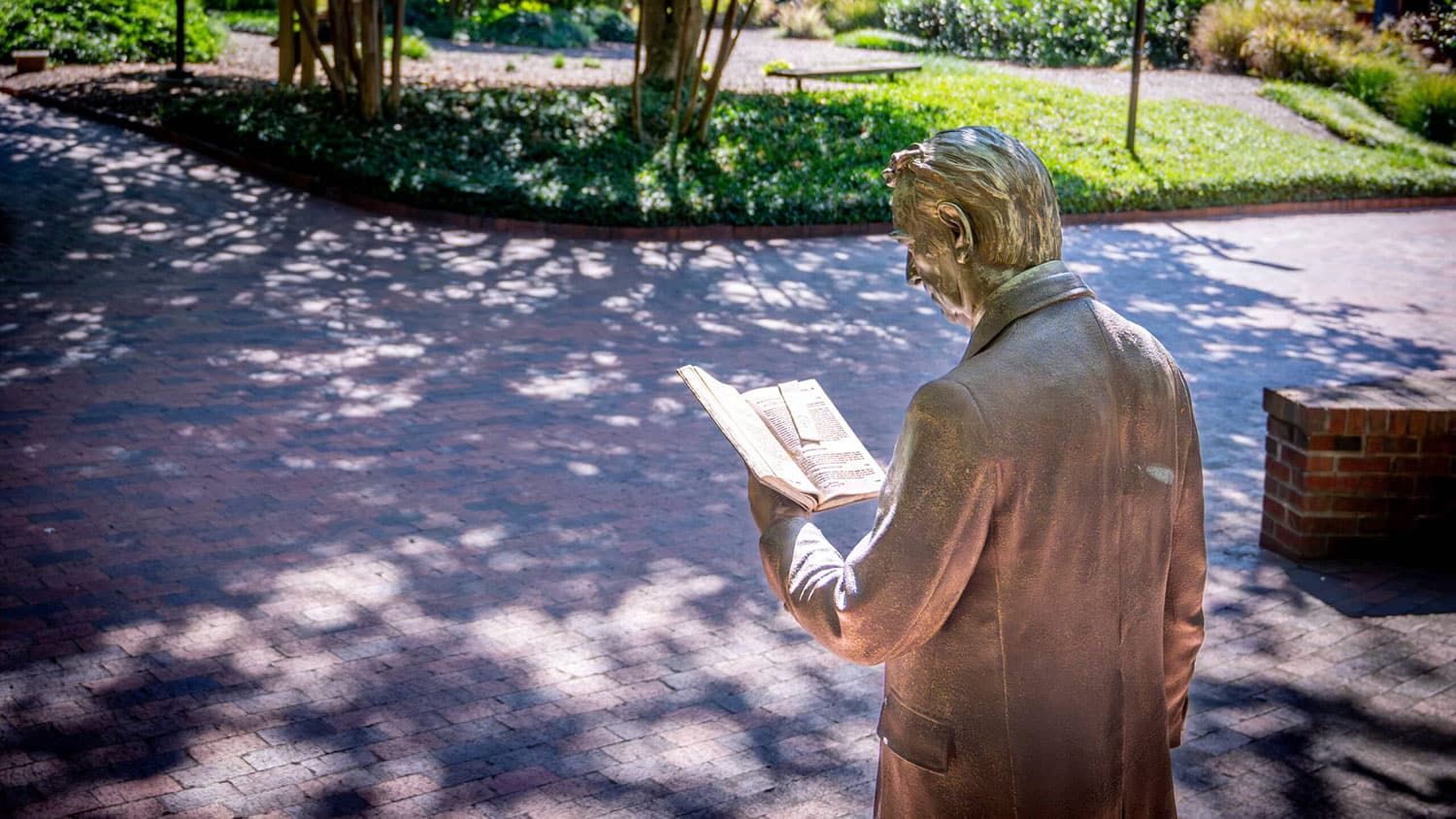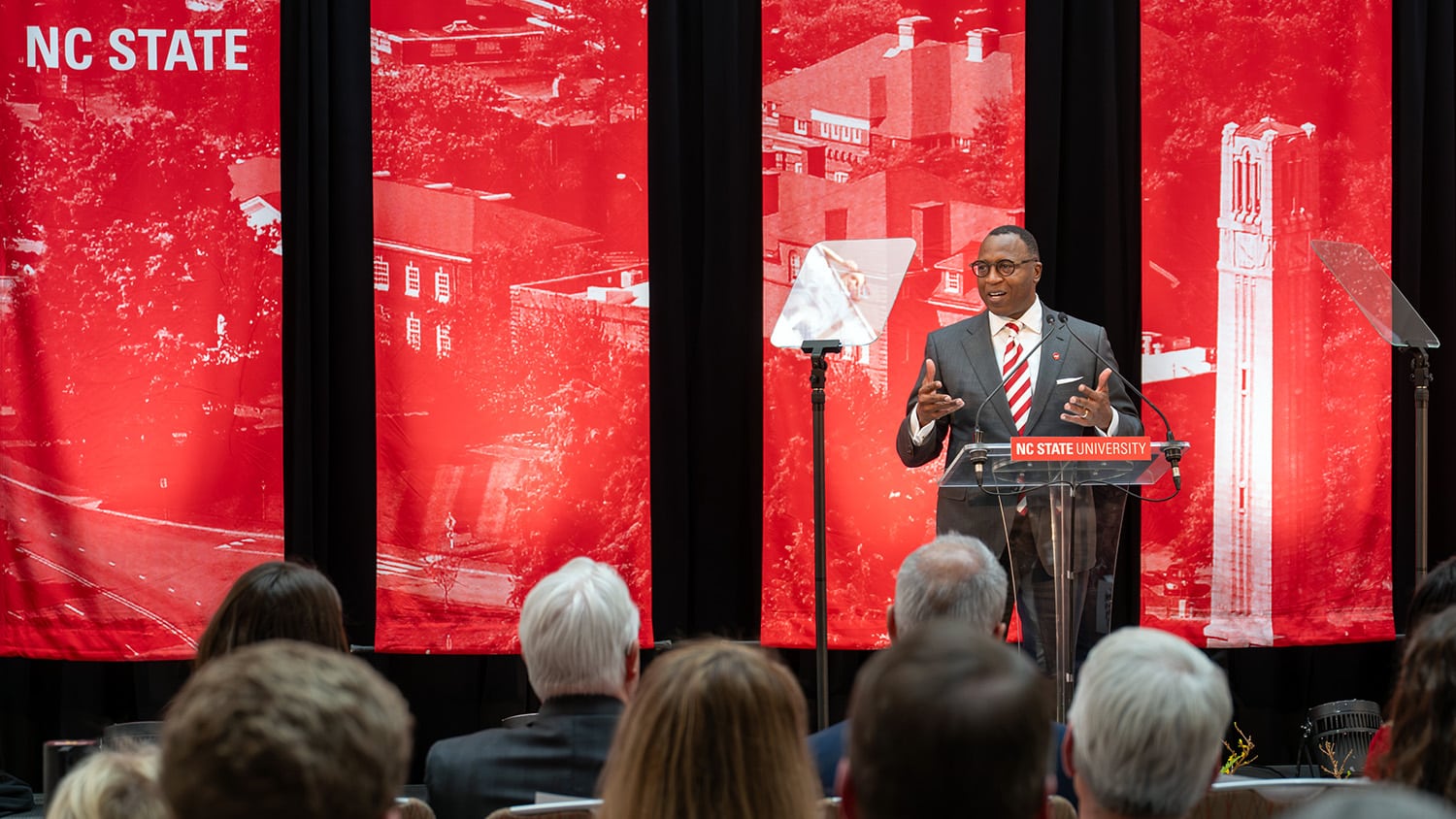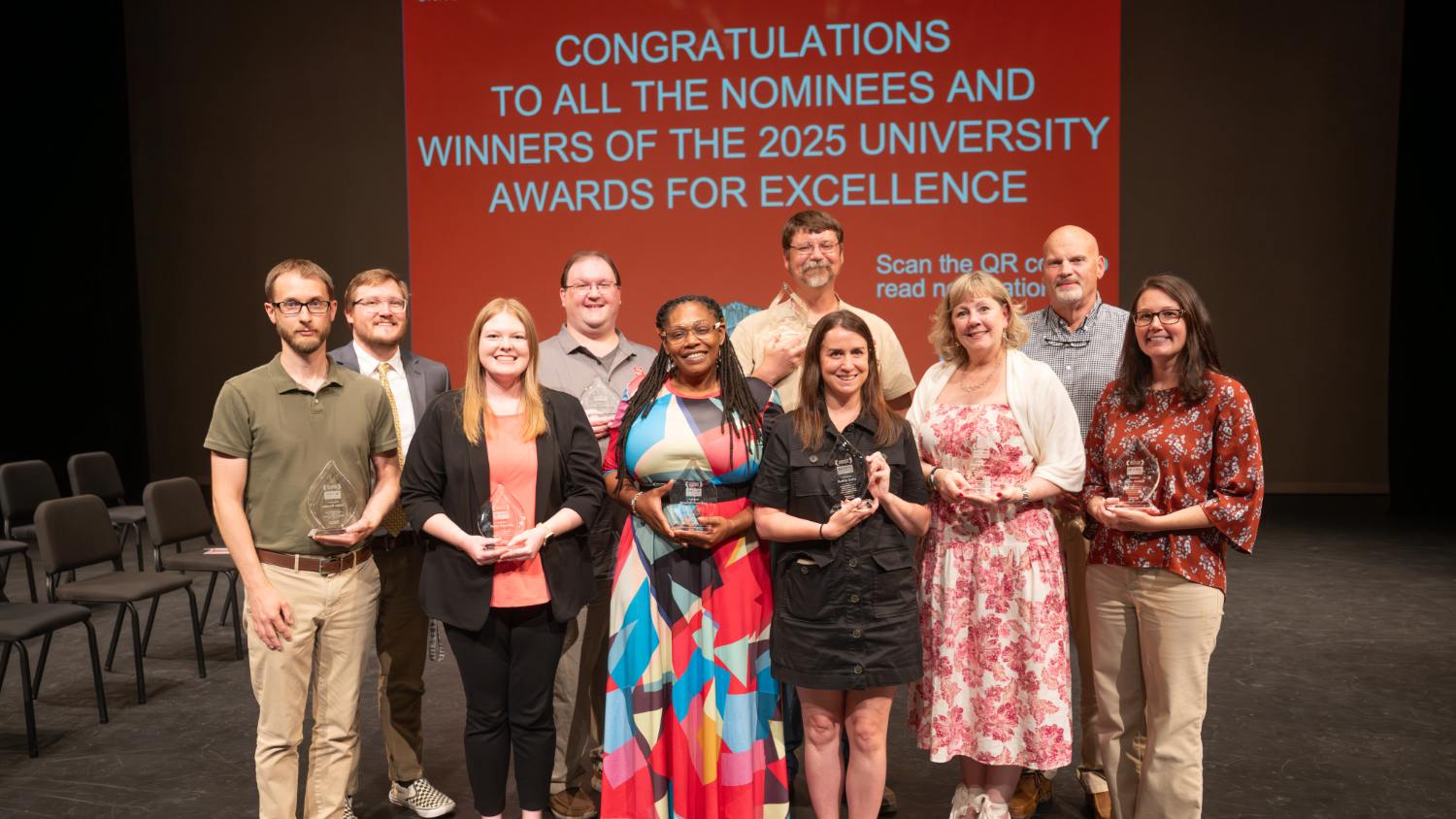Underpinnings of Science
As museums go, it’s small – just two rooms on the fourth floor of Gardner Hall. After signing the guest book and peering at a few bright butterflies, it takes some imagination to get past the lingering odor of mothballs and appreciate what’s inside rows of gray cabinets: a collection of 1.4 million insects.
“People tend to assess collections as sort of antiquated or not particularly useful – something from a bygone era,” says Dr. Andy Deans, assistant professor of entomology and director of NC State’s Insect Museum. “They smell mothballs and associate it with grandma’s closet. But collection-based science is probably more sophisticated and active right now than it’s ever been.”
Deans’ research, for example, deals with modern questions about biodiversity and evolution. He and his colleagues use data about insect anatomy and genomes to estimate relationships among insect lineages, a field known as systematics.
Understanding insect relationships is fundamental, given that experts believe 80 to 95 percent of the world’s insects have yet to be collected, described and named. Deans is among some 20 NC State scientists who contribute to evolutionary “tree of life” research.
Examining specimens is essential. “If I’m collecting anatomical data, comparing species X and Y, I’d want to examine 10 to 20 of each species,” Deans says. “That helps me understand how important a trait like the presence or absence of wings is and whether it may be a function of the environment or evolution.”
Thanks to international colleagues and indexed, digital information, it’s easier to locate insects the world over for comparison. Postdoc István Mikó patiently examines parasitic wasps under a microscope, looking for key features. He’s worked with specimens from Australia, Turkey, Chile, Hungary, Bolivia, Madagascar, the United Arab Emirates, Yemen and Thailand.
“It’s amazing to be working here with Andy in this lab,” he says. “It’s a great opportunity.”
If you’re interested in the big questions of biodiversity it’s a good time to be a student or scientist at NC State, where the massive insect collection has been painstakingly assembled. It’s the largest south of the Smithsonian, north of the University of Florida and east of Texas A& M University, Deans says.
Snapshots in Time
Glass-topped trays of pinned insects, vials, microscope slides and alcohol-filled jars of caterpillars fill the museum. Trays are set aside for labs in Deans’ Insect Biodiversity and Evolution classes, where students sharpen their insect identification skills. NC State’s collection is rich in cicadas, leafhoppers, planthoppers, spittlebugs and treehoppers, part of the order Hemiptera, previously known as Homoptera.
“It’s probably one of the top three in North America for those types of insects,” Deans says. “We’ve had three generations of homopterists working here since the early part of the century – 90 years of work.”
Around 1952, professors’ individual collections were pulled together into a reference collection for the department, which grew into the museum. NC State scientists continue to add insects to the collection as research vouchers, preserving their work for posterity. Others can come and examine the specimens for themselves to verify results. Today, the Insect Museum is frequently consulted as the top collection of North Carolina insects, thanks to prolific NC State researchers as well as individual donors.
Collection manager Bob Blinn, who joined NC State 22 years ago, remembers one of the largest private donations more than a decade ago: Tom Daggy’s 90,000 insect specimens, collected over 50 years, complete with hand-written labels and a card catalog of field notes. In 2000, the N.C. Department of Agriculture sent hundreds of thousands of insects to the university.
“Putting those collections together made the best collection anywhere for North Carolina insects,” says Lew Deitz, an emeritus professor in entomology who was in charge of the collection at the time.
Deitz first used the collection as a doctoral student at NC State in the early 1970s. “You never know how the collection is going to be useful,” he says. “It provides so much baseline information.”
When faced with a pest problem, agricultural officials can confirm the identity of the insects and compare them with those in past outbreaks. Customs inspectors who discover ants on a shipment can get answers about whether they are native insects or new invaders. The insects provide a historical record – snapshots of life. Is the vegetation in the area different now than 60 years ago? Scraping pollen from pinned bumblebees’ legs could help researchers find answers.
Each pinned insect has a half- by three-quarter-inch label crammed with information in tiny type: county, state, country, longitude and latitude where it was collected, host species and scientific name. “My colleague Rob Dunn in biology refers to them as death certificates,” Deans says with a chuckle.
Fill ‘Er Up
Pinned insects can provide information for centuries if properly preserved and protected from certain beetles and book lice (hence the mothball smell). Deans has examined specimens dating from the 1700s in Europe. “They might be missing a leg or antenna, but otherwise they were intact.”
But storing specimens for years, much less centuries, takes an increasing amount of space, and that’s a challenge. The museum, already a tight squeeze, is at 95 percent capacity, although it may expand into one additional room soon.
Deans would also like to expand the museum’s outreach beyond the boxes of butterflies that go out on school visits.
“We want to grab the attention of youngsters and help find the next generation of entomologists,” he says.
For now, he’s looking forward to finding time to sit down with students and colleagues to sort through the jars of unclassified “insect soup” and identify specimens.
“We’re almost full now, but we have a commitment for expansion and the future looks bright,” Deans says.
- Categories:


